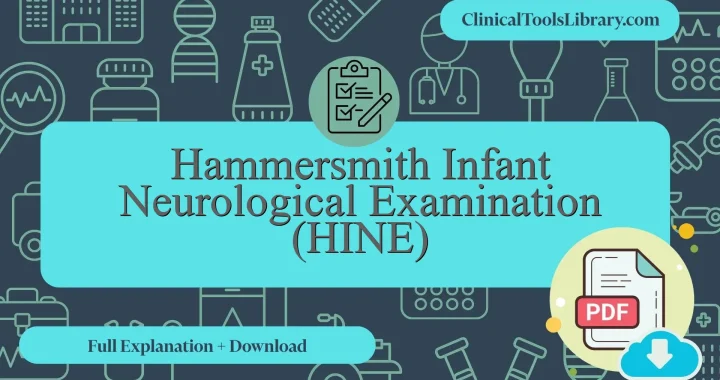In this article, we explain everything you need to know about the Walking While Talking Test. We will cover the aspects it evaluates, the target population, a detailed step-by-step explanation, and how to interpret its results. Additionally, we will dive into the scientific evidence supporting this tool (diagnostic sensitivity and specificity) in clinical assessment. You will also find official and unofficial sources available for download in PDF format.
What does the Walking While Talking Test assess?
The Walking While Talking Test assesses an individual’s ability to maintain gait stability while simultaneously performing a cognitive task, such as responding to questions or reciting sequences. This dual-task evaluation is primarily used to identify impairments in executive function and attention, which are critical components of cognitive-motor integration. The test serves as a predictor of fall risk and functional decline, especially in older adults and patients with neurodegenerative disorders like Parkinson’s disease and dementia. By measuring changes in walking speed and cognitive performance, clinicians gain insight into the interplay between motor control and cognitive processing under divided attention conditions.
For which type of patients or populations is the Walking While Talking Test intended?
The Walking While Talking Test is primarily indicated for older adults and individuals with cognitive impairment or neurological disorders, such as Parkinson’s disease and dementia. It is most useful in clinical settings focused on fall risk assessment and mobility evaluation, as it effectively identifies those with impaired dual-tasking abilities, which correlate with an increased risk of falls. This test provides valuable insight into gait disturbances that may not be evident under single-task conditions, aiding in the early detection of functional decline in populations vulnerable to both motor and cognitive deficits.
Step-by-Step Explanation of the Walking While Talking Test
The Walking While Talking Test requires the clinician to observe the patient as they walk a specified distance, typically 10 feet, while simultaneously engaging in a verbal task. The verbal component consists of 10 items, including counting backwards from 100 by sevens or naming alternating categories such as animals and foods. Responses are recorded both qualitatively, noting any hesitations or errors, and quantitatively, by tallying correct answers and gait speed. This dual-task paradigm assesses cognitive-motor interference, which is particularly relevant in evaluating patients with gait disorders, cognitive impairment, or risk of falls. The test’s response format involves spontaneous verbal responses during ambulation, with special attention to accuracy and timing to identify deficits in executive function and motor coordination.
Walking While Talking Test PDF: Downloadable Resources in Original and English Versions
Below are downloadable resources available in PDF format for the Walking While Talking Test, provided in both the original language and English. These materials are designed to support healthcare professionals in assessing cognitive and motor functions simultaneously, which is crucial for identifying early signs of dementia and other neurological disorders. Access to these standardized versions ensures consistency in administration and facilitates cross-linguistic studies within clinical settings.
How to interpret the results of the Walking While Talking Test?
The Walking While Talking Test measures dual-task gait speed by calculating the difference between usual walking speed and walking speed while performing a cognitive task, typically expressed as dual-task cost (DTC) using the formula: DTC (%) = ((usual gait speed – dual-task gait speed) / usual gait speed) × 100. Reference ranges vary by age, but a DTC greater than 20% is often indicative of impaired executive function and may correlate with increased risk of falls and cognitive decline. For healthcare professionals, elevated DTC values suggest the need for comprehensive assessment of mobility and cognitive status, enabling targeted interventions to reduce fall risk and monitor progression of neurodegenerative conditions such as Parkinson’s disease or vascular dementia. Practical application involves integrating Walking While Talking Test results with clinical evaluation to inform personalized rehabilitation strategies.
What scientific evidence supports the Walking While Talking Test ?
The Walking While Talking Test (WWTT) was originally developed in the early 1990s as a dual-task assessment to evaluate the interplay between cognitive and motor functions. Validation studies have demonstrated that the WWTT reliably identifies gait disturbances linked to mild cognitive impairment and predicts future falls in older adults. Neuroimaging research correlates poor performance on the WWTT with structural changes in the frontal lobe and basal ganglia, regions critical for executive function and motor control. Longitudinal data further support its prognostic value in detecting early signs of Parkinson’s disease and dementia, particularly when traditional gait assessments show normal results. Collectively, these findings establish the WWTT as a sensitive, non-invasive tool with robust clinical relevance in assessing the risk of mobility decline associated with cognitive disorders.
Diagnostic Accuracy: Sensitivity and Specificity of the Walking While Talking Test
The Walking While Talking Test demonstrates variable sensitivity and specificity depending on the population studied and the outcome measured. In detecting mild cognitive impairment, sensitivity ranges from approximately 70% to 85%, while specificity typically varies between 65% and 80%. These values indicate that the test is moderately effective in identifying individuals at risk for dementia and falls but may produce false positives or negatives in some cases. Its diagnostic performance tends to improve when combined with other clinical assessments, enhancing overall predictive accuracy for adverse neurological outcomes.
Related Scales or Questionnaires
The Timed Up and Go (TUG) test and the Dual-Task Gait Assessment are commonly employed assessments similar to the Walking While Talking Test, both focusing on mobility and cognitive-motor interference. The TUG provides rapid evaluation of functional mobility but may lack sensitivity in detecting subtle executive dysfunction present in Parkinson’s disease or dementia. Dual-Task Gait Assessments offer more detailed insight into cognitive-motor integration, yet they require specialized equipment and trained personnel, limiting widespread clinical utility. Additionally, the Montreal Cognitive Assessment (MoCA) and the Mini-Mental State Examination (MMSE) capture cognitive impairment but do not directly assess gait and balance simultaneously. These scales and questionnaires, alongside their psychometric properties, are explained and available for download on ClinicalToolsLibrary.com.




